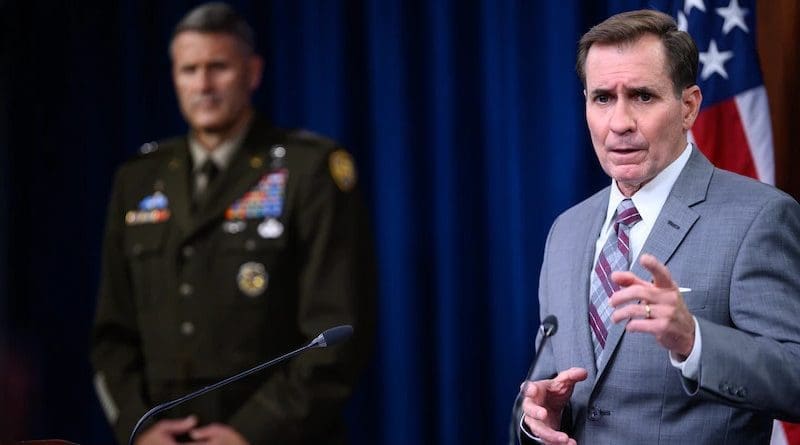Pentagon Says ‘Over-The Horizon’ Air Strike Kills 2 High-Profile ISIS-K Targets
By DoD News
By C. Todd Lopez
The U.S. military conducted an unmanned drone strike in Nangarhar Province, Afghanistan — to the east of Kabul — which killed two ISIS-K individuals who were known to be responsible for planning and facilitation activities within the organization, the Pentagon’s joint staff deputy director for regional operations said.
During a briefing Saturday at the Pentagon, Army Maj. Gen. William D. “Hank” Taylor said that an additional ISIS-K member was also wounded in the strike, and that there were “zero civilian casualties.”
“We will continue to have the ability to defend ourselves and to leverage over-the-horizon capability to conduct counter-terrorism operations as needed,” Taylor said.
The U.S. military has said since the departure from Afghanistan was announced that it has the ability to conduct “over-the-horizon” operations as part of its ongoing counter-terrorism mission. That means it would continue to be able to conduct an operation such as the drone strike in Nangarhar Province, without having to actually launch it from within Afghanistan.
While two ISIS-K members were killed and one was injured, the security situation in Afghanistan is still dangerous, said Pentagon Press Secretary John F. Kirby.
“The threat stream is still active, still dynamic. We’re still laser focused on that and force protection, and we aren’t thinking for a minute that what happened yesterday gets us in the clear,” Kirby said. “Do we think that that will have some impact on their ability going forward? Absolutely. What and to how much we’re just going to have to keep watching the intelligence going forward.”
The U.S. military expects to be out of Afghanistan by August 31. Until then, noncombatant evacuation operations, or NEO, continue at Hamid Karzai International Airport to get as many American citizens, Afghan special immigrant visa applicants and other vulnerable Afghans out of the country.
At the same time that evacuation is happening, the U.S. military is also conducting retrograde operations to get out military equipment and people not involved in the NEO. Taylor said both of those operations — the NEO and the retrograde — can happen concurrently and both will continue until the last U.S. aircraft and service member leaves the country.
“We have the ability to include evacuees on military airlift out of Afghanistan until the very end,” he said. “This is a massive military, diplomatic, security and humanitarian undertaking for the United States and our allies.”
In the last 24 hours, he said, 32 U.S. military aircraft left Hamid Karzai International Airport with about 4,000 personnel. An additional 34 coalition aircraft departed the airport with approximately 2,800 personnel.
So far, he said, more than 117,000 have been evacuated from Afghanistan, with approximately 5,400 of those being American citizens.
“This is an incredible number of people who are now safer thanks to the heroism of the young men and women who are putting their lives on the line each day to evacuate American and vulnerable Afghans out of Kabul,” Taylor said.
Thursday morning outside the gates of Hamid Karzai International Airport in Kabul, 13 of those American service members were killed as the result of an enemy attack while supporting the NEO there. A number of Afghan civilians were also killed, and both American service members and Afghan civilians were injured. Those service members killed came from the Marine Corps, the Army and the Navy.
From the Marine Corps, the deceased include Sgt. Darin T. Hoover, Sgt. Johanny Rosariopichardo, Sgt. Nicole L. Gee, Cpl. Hunter Lopez, Cpl. Daegan W. Page, Cpl. Humberto A. Sanchez, Lance Cpl. David L. Espinoza, Lance Cpl. Jared M. Schmitz, Lance Cpl. Rylee J. McCollum, Lance Cpl. Dylan R. Merola, and Lance Cpl. Kareem M. Nikoui. From the Navy, Seaman Maxton W. Soviak was killed. And from the Army, it was Staff Sgt. Ryan C. Knauss who was killed.

